Wow! eBook: Learning C# by Developing Games with Unity 3D: Beginner’s Guide - 6 new eBooks |  |
- Learning C# by Developing Games with Unity 3D: Beginner’s Guide
- Learning ROS for Robotics Programming
- Moodle for Mobile Learning
- Kivy: Interactive Applications in Python
- Getting Started with Magento Extension Development
- Learning Google Guice
| Learning C# by Developing Games with Unity 3D: Beginner’s Guide Posted: 03 Mar 2014 09:20 AM PST
Book DescriptionFor the absolute beginner to any concept of programming, writing a script can appear to be an impossible hurdle to overcome. The truth is, there are only three simple concepts to understand: 1) having some type of information; 2) using the information; and 3) communicating the information. Each of these concepts is very simple and extremely important. These three concepts are combined to access the feature set provided by Unity. “Learning C# by Developing Games with Unity 3D” assumes that you know nothing about programming concepts. First you will learn the absolute basics of programming using everyday examples that you already know. As you progress through the book, you will find that C# is not a foreign language after all, because you already know the words. With a few keywords and using substitution, before you know it, you’ll be thinking in code. The book starts by explaining in simple terms the three concepts you need for writing C# code and scripts: 1) variables to hold information; 2) methods (functions) to use the information; and 3) Dot Syntax to communicate the information where it’s needed. The book builds on these concepts to open up the world of C# coding and Unity scripting. You will use this new power to access the features provided in Unity’s Scripting Reference. The first half of this book is devoted to the code writing beginner. The concepts of variables, methods, Dot Syntax, and decision processing are fully explained. Since C# is an actual programming language, we take advantage of this to develop a State Machine to help control and organize each phase of a Unity project. Once the basic programming concepts are established and we have some State Machine organization, the features and power of Unity are accessed using the Scripting Reference. The goal of “Learning C# by Developing Games with Unity 3D” is to teach to you how to use the Unity Scripting Reference. What you will learn from this book
Approach This book uses the learning-by-example approach. It takes simple examples from games to introduce all the main concepts of programming in an easy-to-digest and immediately recognizable way. Who this book is for This book is for the total beginner to any type of programming, focusing on the writing of C# code and scripts only. There are many parts that make up the Unity game engine. It is assumed that the reader already knows their way around Unity’s user interface. The code editor used in this book is the MonoDevelop editor supplied by Unity. Book Details
Related Books
The post Learning C# by Developing Games with Unity 3D: Beginner’s Guide appeared first on Wow! eBook. |
| Learning ROS for Robotics Programming Posted: 03 Mar 2014 09:16 AM PST
Book DescriptionBoth the amateur and the professional roboticist who has ever tried their hand at robotics programming will have faced with the cumbersome task of starting from scratch, usually reinventing the wheel. ROS comes with a great number of already working functionalities, and this book takes you from the first steps to the most elaborate designs possible within this software framework. “Learning ROS for Robotics Programming” is full of practical examples that will help you to understand the framework from the very beginning. Build your own robot applications in a simulated environment and share your knowledge with the large community supporting ROS. “Learning ROS for Robotics Programming” starts with the basic concepts and usage of ROS in a very straightforward and practical manner. It is a painless introduction to the fascinating world of robotics, covering sensor integration, modeling, simulation, computer vision, and navigation algorithms, among other topics. After the first two chapters, concepts like topics, messages, and nodes will become daily bread. Make your robot see with HD cameras, or navigate avoiding obstacles with range sensors. Furthermore, thanks to the contributions of the vast ROS community, your robot will be able to navigate autonomously, and even recognize and interact with you, in a matter of minutes. “Learning ROS for Robotics Programming” will give you all the background you need to know in order to start in the fascinating world of robotics and program your own robot. Simply, you put the limit! What you will learn from this book
Approach Who this book is written for Book Details
Related Books
The post Learning ROS for Robotics Programming appeared first on Wow! eBook. |
| Posted: 03 Mar 2014 09:11 AM PST
Book DescriptionMobile devices have become ubiquitous and offer many new possibilities for learning. Moodle, when combined with a mobile device, opens up a new world of possibilities to teachers, instructors, and training professionals to develop their courses. The learning experience can be hugely improved by playing to the strengths of mobile devices, and Moodle for Mobile Learning helps you do just that. “Moodle for Mobile Learning” is a practical, hands-on guide that provides you with ideas and step-by-step exercises that will help you leverage the features of mobile devices in your Moodle course designs. It also aims at providing you with hands-on knowledge in creating mlearning courses so that you can create your own effective mobile learning interactions. Looking at the underlying theory of mobile learning, “Moodle for Mobile Learning” aims to enable you to apply this to course design using Moodle. Organized into key sectors including schools, further and higher education, and workplace learning, this book will take you through a number of clear, practical recipes that will help you to take advantage of mobile technology in your Moodle course design. You will learn how to develop your mobile learning strategy and whether to use a mobile friendly Moodle theme or a Moodle mobile app to deliver your strategy. There are certain types of learning activities that are perfectly suited to mobile delivery. We look at delivering podcasts, engaging with social media, setting up photo, video and audio assignments, setting up eBook and App libraries, uploading audio assignment feedback, submitting reflective logs, using chat and messaging tools, using web conferencing and much more. Mobile devices already form the backbone of your learners' daily lives. If you want to use Moodle to bring those devices into the learning process, then this is the book for you. What you will learn from this book
Approach Who this book is for Book Details
Related Books
The post Moodle for Mobile Learning appeared first on Wow! eBook. |
| Kivy: Interactive Applications in Python Posted: 03 Mar 2014 09:00 AM PST
Book DescriptionMobiles and tablets have brought with them a dramatic change in the utility of applications. Compatibility has become essential, and this has increased the kind of interaction that users expect: gestures, multi-touches, animations, and magic pens. Kivy is an open source Python solution that covers these market needs with an easy-to-learn and rapid development approach. Kivy is growing fast and gaining attention as an alternative to the established developing platforms. Kivy: Interactive Applications in Python quickly introduces you to the Kivy development methodology. You will learn some examples of how to use many of the Kivy components, as well as understand how to integrate and combine them into big projects. This book serves as a reference guide and is organized in such a way that once finished, you will have already completed your first project. You will start by learning the Kivy Language for building User Interfaces (UI) and vector figures. We then proceed to the uses of Kivy events and properties to glue the UI with the application logic. You then go on to build an entire User Interface (UI) starting from a hand-made sketch. Furthermore, you will go on to understand how to use the canvas and drawing instructions to create different types of geometrical figures. Finally, you will be introduced to a big set of interactive and smooth features: transformations (scale, rotate, and translate), gestures, animations, scheduling tasks, and multi-touch elements. Kivy: Interactive Applications in Python expands your knowledge by introducing various components that improve the User Experience (UX). Towards the end of the book, you will be confident to utilize Kivy components and strategies to start any application or game you have in mind. What you will learn from this book
Approach Who this book is written for Book Details
Related Books
The post Kivy: Interactive Applications in Python appeared first on Wow! eBook. |
| Getting Started with Magento Extension Development Posted: 03 Mar 2014 08:57 AM PST
Book DescriptionModules, are a group of php and xml files meant to extend the system with new functionality, or override core system behavior. Most of the base Magento system is built using the module system, so you can see why they are an important feature for this rich open-source e-commerce solutions. This book explores key module development techniques and teaches you to modify, understand and structure your modules making it easy for you to get a strong foundation for clean and unobtrusive Magento module development. Getting Started with Magento Module Development is a practical, hands-on guide to building Magento modules from scratch. This book provides an in depth introduction and helps you discover features such as; blocks, controllers, models, configuration files, and other crucial elements which contribute to the Magento architecture. This book introduces the you to real-world modules and helps provide a strong foundation which you need to become a professional Magento module developer. The book further explores best practices and tips and tricks offering you the ultimate go to guide. Getting Started with Magento Module Development focuses on three areas. First you are guided through the entire Magento structure, where each important directory or file is explored in detail. Then the essence of the module structure and development is explained through the detailed coverage of models, blocks, controllers, configuration, and other files that manifest a single module. Finally, a detailed set of instructions is given for building four real-world modules, including a payment and shipping module. What you will learn from this book
Approach Who this book is written for Book Details
Related Books
The post Getting Started with Magento Extension Development appeared first on Wow! eBook. |
| Posted: 03 Mar 2014 08:54 AM PST
Book DescriptionGoogle Guice is an open source software framework for the Java platform released by Google under the Apache License. It provides support for dependency injection using annotations to configure Java objects. Learning Google Guice is a concise, hands-on book that covers the various areas of dependency injection using the features provided by the latest version of Google Guice. It focuses on core functionalities as well as the various extensions surrounding Guice that make it useful in other areas like web development, integration with frameworks for web development, and persistence. Learning Google Guice covers Guice extensions which avoid complex API usage. You will start by developing a trivial application and managing dependencies using Guice. As the book gradually progresses, you will continue adding complexity to the application while simultaneously learning how to use Guice features such as the Injector, Provider, Bindings, Scopes, and so on. Finally, you will retrofit the application for the Web, using Guice not only to manage dependencies, but also to solve configuration related problems. What you will learn from this book
Approach Who this book is written for Book Details
Related Books
The post Learning Google Guice appeared first on Wow! eBook. |
| You are subscribed to email updates from Wow! eBook To stop receiving these emails, you may unsubscribe now. | Email delivery powered by Google |
| Google Inc., 20 West Kinzie, Chicago IL USA 60610 | |

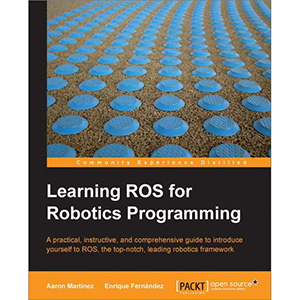
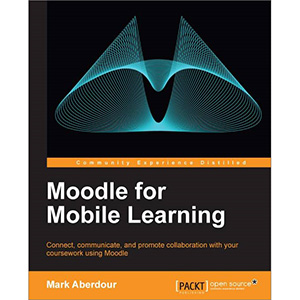
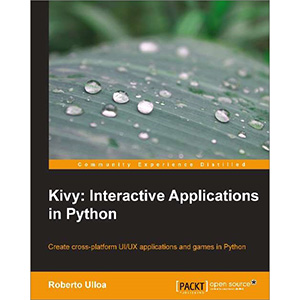
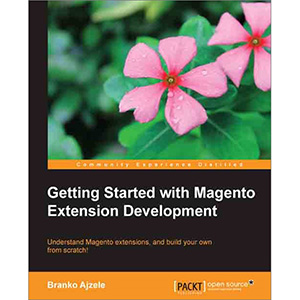
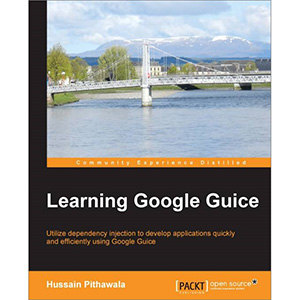
Tidak ada komentar:
Posting Komentar